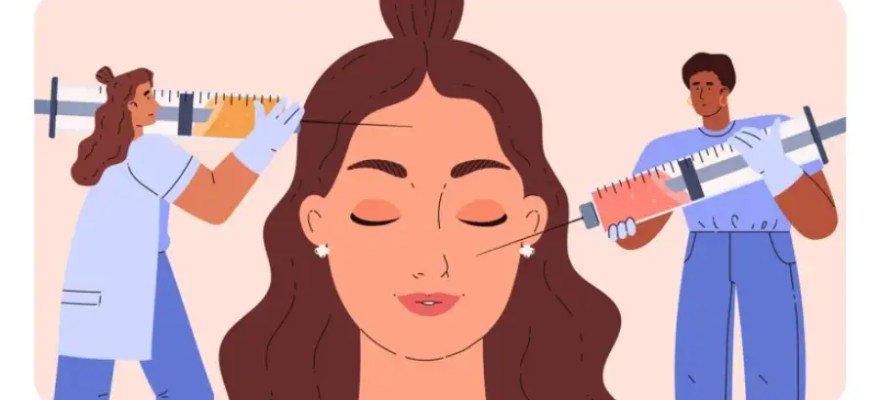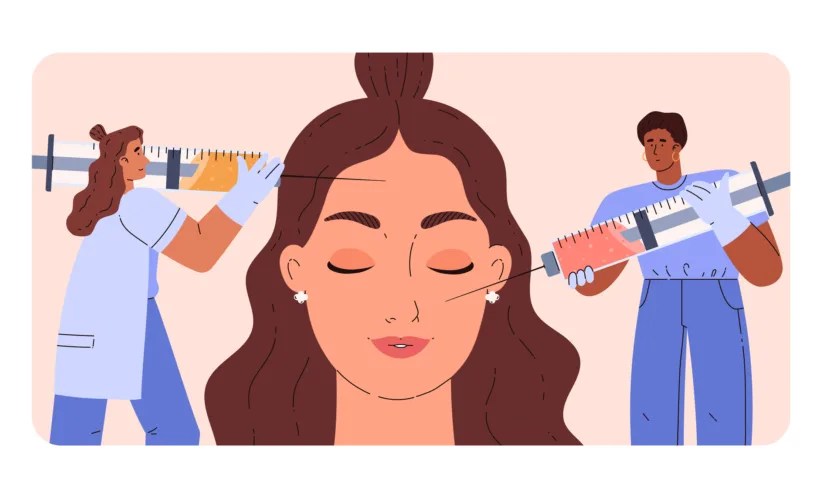

Beauty in the Age of Filters: Reflections on Aging
Every night, I look in the mirror at the 39-year-old woman staring back at me. I am not young. I am not old. But things are changing. I pluck a gray hair and wonder, do I have jowls? Are my lips wrinkling, or am I just dehydrated? In truth, I don’t take great care of myself. I don’t moisturize enough. I don’t speak the language of dermatology. Sometimes I forget to wear a hat. I wonder what will happen if I continue down this course. Will I look like a little old lady while everyone else I know has the skin of a baby’s bottom? What will I look like if I look 87? The rebellious side of my personality toys with being a silver fox. What if I let my skin leather with decades of happy summers in the sun? Maybe I can be a fearless, cool crone like Iris Apfel. In some ways, I can present as low maintenance. I’ll never be a woman with a perfect manicure or blowout, but I have a vibe and my own vices. I haven’t taken the leap into injectables because I am scared. I work out three days a week and start the day with a Gwenyth Paltrow intermittent fast until lunch to keep carbs, cheese, and wine in my major food groups. There are months that I become fed up with my graying hair and impulsively drive to a salon for a single process rinse. Maybe I am not ready to look old.
In today’s filtered online world, no one needs to look old. Mainstream photo-editing tools like Facetune and Instagram’s Paris filter shrink my pores and waistline in a swipe and a pinch. Such advances in technology and media created our youth-obsessed culture and standards of beauty so unattainable that even celebrities cannot keep up. In December 2023, 56-year-old actress Maria Bello made headlines for lamenting that “every housewife on TV was seemingly getting younger” while she was getting older. Try she did to beat the clock, but it only brought misery and pain. Eventually, she learned to “own it.” Self-acceptance is always the goal, but every day every woman must confront the mirror and ask herself: is this the best she can do?
The best one can do is a personal assessment. It is the lowest amount of work one is willing to put in to look and feel presentable when leaving the house. While this changes depending on the occasion, for the purpose of this examination, my personal best will be defined as good enough to run into an old friend on the street without feeling naked in my aging face.
As I grapple with the shifting shape of my head, I consult the women in my life to understand how they approach growing older. My first call is to my lawyer and mother, who is 69. I asked her if I could refer to myself as “coming from vain people ‘’ in print without offending her. She responds with knowing agreement. She believes that her mother, a beautiful woman with never a blonde hair out of place, would be “rolling over in her grave to know that her daughter let her hair go white.” During the pandemic, my mother went cold turkey on hair dye, declaring herself free. “As you get older,” she says, “everything changes.” While she no longer cares much about clothes or makeup, she admits she misses her blonde era. Asked for her current definition of “good enough,” she says she doesn’t want to give up Botox because she doesn’t want to “look like a hag.” My first lesson in aging: everyone has a relationship with appearance and their own line for its maintenance, one that might shift over time.
Psst…Check out Financial Goals for Kids: How to Set Them and Why It’s Important
At the mention of Botox, I call Dr. Margo Lederhandler–the go to dermatologist of my thirty-something mom friends in Westchester, NY. My first line of questions came from my observation of a group of 29-year-old girls at a neighboring table at a restaurant. In a discussion of their addiction to Botox, one joked that she “didn’t know what was in it, but didn’t care.” When probed about the science and risk factors of looking good, Dr. Lederhandler expertly detailed the history of Botulinum toxin-A, first used as an ophthalmological treatment in the 1970s. When injected into the nerve under the skin near the eye, doctors saw offensive muscle spasms go away with a wrinkle reduction bonus. This cosmetic purpose was FDA approved in 2002, launching a multimillion-dollar anti-aging revolution of injectable products that smooth lines and fill sag. Aside from the occasional bruise or a reversible eyelid or eyebrow droop, Dr. Lederhandler assures that the risks are low when the facial anatomy is assessed properly.
Reassured that the toxins that freeze muscles won’t scramble my brain, I ask Dr. Lederhandler if I’ve missed my boat not starting at 29. What’s the deal with preventative? She advises patients to “begin injectables when bothered by lines that remain when the face is at rest.” The lines on the skin show signs of repeated muscle movement. The longer those lines are ingrained, the harder it will be to erase them. In that sense, earlier can be better. As we ponder the many other options to prevent aging, my mind races. Overwhelmed by the magnitude of treatments that range from surgical to injectable to topical to lasers, Dr. Lederhandler brings me back to the present with the admission: It is OK to age. “We will all age,” she reminds. “Some people don’t want to be lineless.” For her patients and herself, her goal is “not to defy aging, but to look like the best version of herself.” She uses injectables, lasers, topicals and sunscreen to help patients look rested and refreshed. To Dr. Lederhandler, “aging gracefully does not mean giving up; rather, it is to help patients understand what is reasonable and to feel good in their skin.”
Armed with more information, I toy with the idea of a laser to keep my pores cute for in real-life encounters on the street. As I consider the many other things I could do with the price of eternal youth, I slink back into my regular life. While chatting with my writer friend Fran Scheffler, I ask her how she approaches beauty as she ages. A stunning silver fox at 77, I learned that her dark hair started to go gray at the age of 15. In college, she got away with a Clarol wash-in shampoo, but in her early 30s, she “stopped needing to be that vain” and embraced the slow transformation of age. Reflecting on the impact of her own mother’s vanity, she adds, “in her mother’s generation, dress, makeup and hair was an artform.” It was very important to keep herself looking good. Fran attributes her more simple approach to beauty to the validation she received for her intelligence. With a Ph.D. in Speech, Language, and Hearing, her work as a clinician and academic shifted her focus to bigger things than the mirror. While she worries that “women who are too caught up in looks believe that is all they offer,” she admits that “the women who do nothing look unkempt.” Anything too extreme is unhealthy. Today, Fran wants to look healthy.
As we discussed her style and new hair styling tool, it struck me that a little vanity is important. It is healthy to care about one’s physical appearance. Keeping the body mentally and physically fit is not an irrational quest for youth and beauty. Instead, I rebrand it a pursuit of wholeness in mind, body, and spirit. It is a commitment to accept what is while, as my Grammy would say, “doing the most with what we have.” If it takes a facelift or a crisp new pair of blue jeans to confront the mirror and move on to a greater purpose, you receive no judgment here.
I cannot predict how I will feel or the lengths I will go to feel like I am my best self. We all struggle to accept change at every age. If we are lucky, we will get to mourn the youthful glow that recedes with each passing year and become accustomed to a new face in the mirror. Aging is scary, but I do like the person that I am becoming. My collagen is waning, but my chutzpah grows.








